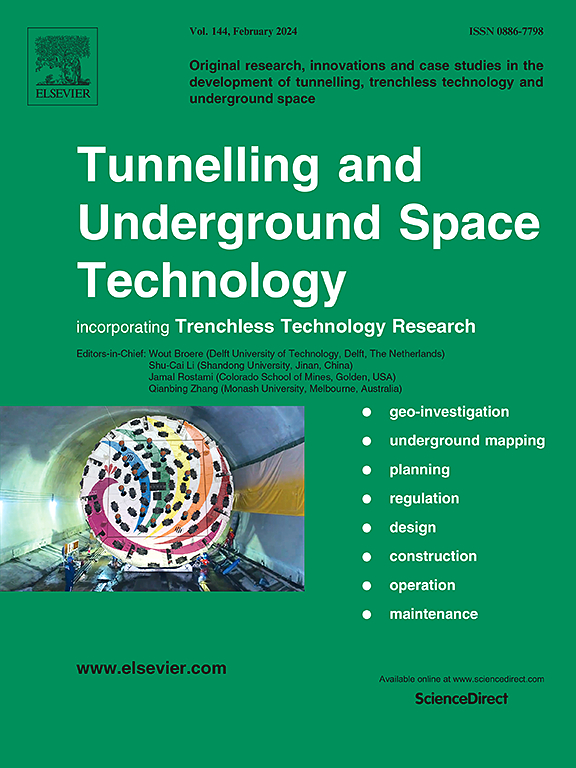Analytical study on the backfill grouting in mitigation of vibrations from a tunnel embedded in a half-space
IF 6.7
1区 工程技术
Q1 CONSTRUCTION & BUILDING TECHNOLOGY
引用次数: 0
Abstract
Ground vibrations from operating railway in tunnels is a significant obstacle to sustainable development of subway. The backfill grouting layer, formed during shield tunneling, serves as a critical medium in propagation of tunnel vibrations, highlighting its potential in vibration mitigation. A semi-analytical model for the tunnel-grouting layer-soil system is proposed in this study, in order to clarify the influence of backfill grouting layer on the dynamic responses in a half-space, subjected to tunnel vibrations. In establishment of the closed-form solution, the tunnel and grouting layer are considered as two nested hollow cylinders embedded in a half-space, with applying the Fourier transform and wave transformation. As a validation, the numerical results from the proposed semi-analytical model are compared with those reported in literature. Parametric studies, with respect to the geometric configuration (i.e., the thickness) and material parameters (i.e., the Young’s modulus, material damping, and density) of the backfill grouting layer in the mitigation of tunnel vibrations, are carried out. It is found that incorporation of the backfill grouting layer significantly changes the dynamic responses of the soil and, by appropriately designing its material parameters, especially the Young’s modulus, effective mitigation of tunnel vibrations can be achieved.
求助全文
约1分钟内获得全文
求助全文
来源期刊

Tunnelling and Underground Space Technology
工程技术-工程:土木
CiteScore
11.90
自引率
18.80%
发文量
454
审稿时长
10.8 months
期刊介绍:
Tunnelling and Underground Space Technology is an international journal which publishes authoritative articles encompassing the development of innovative uses of underground space and the results of high quality research into improved, more cost-effective techniques for the planning, geo-investigation, design, construction, operation and maintenance of underground and earth-sheltered structures. The journal provides an effective vehicle for the improved worldwide exchange of information on developments in underground technology - and the experience gained from its use - and is strongly committed to publishing papers on the interdisciplinary aspects of creating, planning, and regulating underground space.
 求助内容:
求助内容: 应助结果提醒方式:
应助结果提醒方式:


